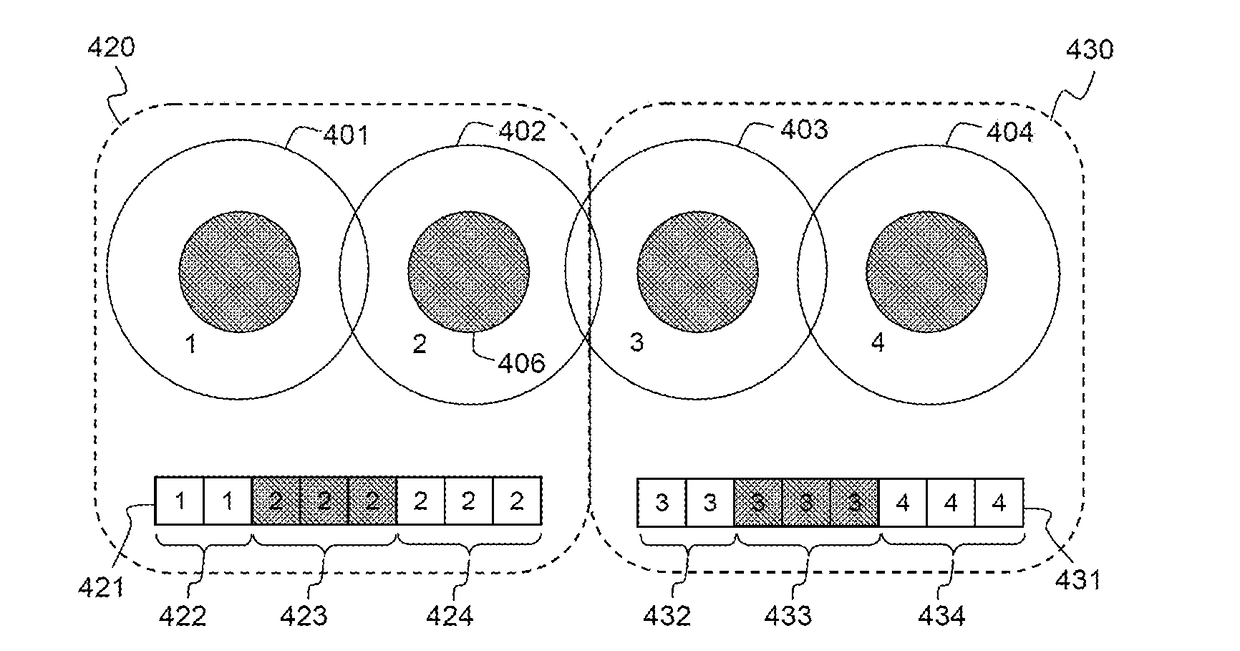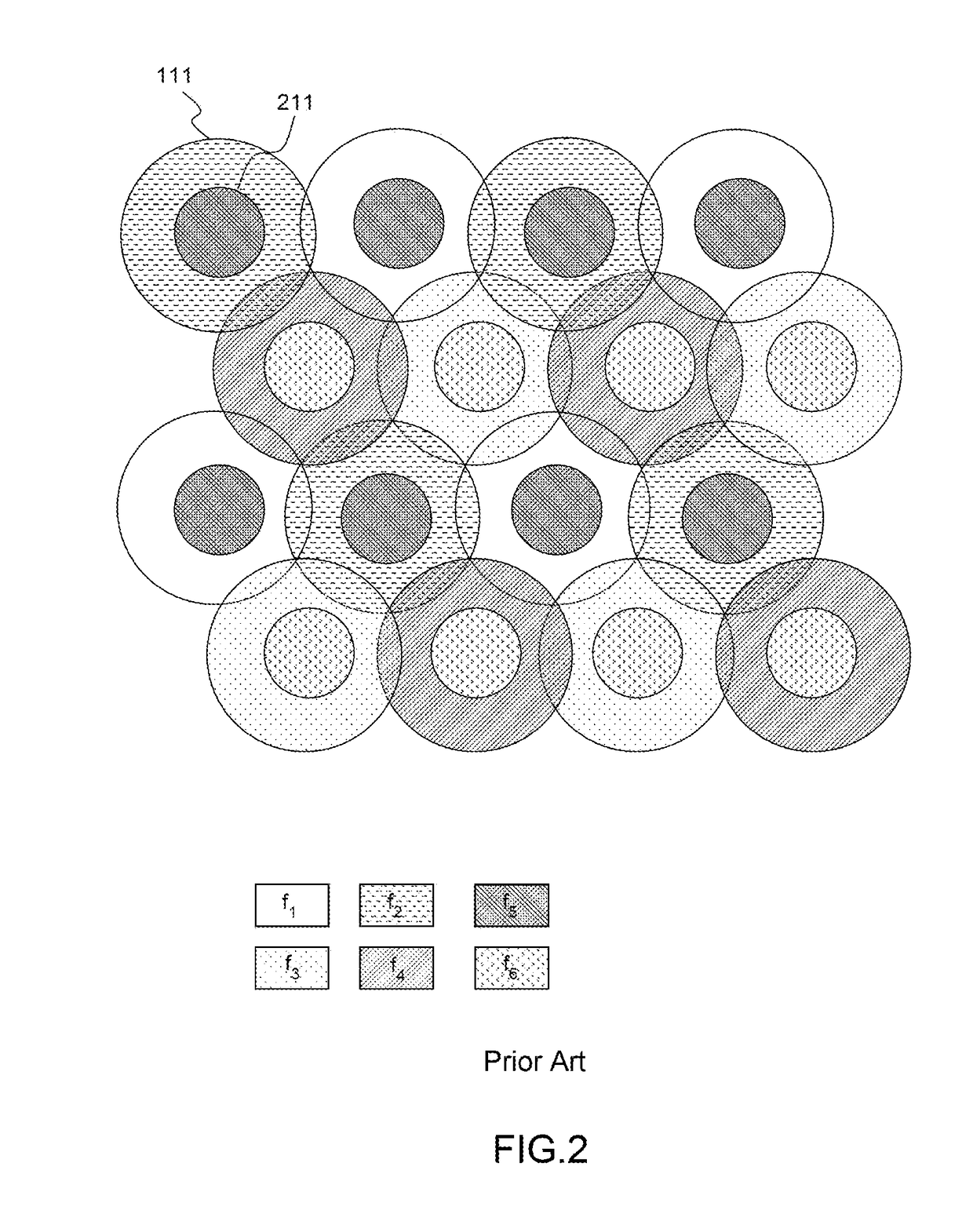Method of satellite communication with flexible capacity distribution based on beam hopping and on a fractional reuse scheme
a satellite communication and flexible technology, applied in the field of high-capacity satellite communications systems, can solve the problems of wide geographical disparities, increase in load on these networks, and not being able to offer non-uniform capacity distribution over the service zone, so as to improve the overall capacity of the network
- Summary
- Abstract
- Description
- Claims
- Application Information
AI Technical Summary
Benefits of technology
Problems solved by technology
Method used
Image
Examples
first embodiment
[0081]FIG. 4a presents the method for allocating the satellite resources in a multibeam satellite network according to the invention.
[0082]The example is limited to the representation of four beams, but applies in an identical manner when the number of beams varies.
[0083]The beams are represented in all the figures by roundels, which are schematic representations of a geographical zone. The position of the various beams, and their relative arrangement, could be different from what is represented in the figures by way of nonlimiting example, the transposition of the invention to different network arrangements not posing any particular problem to the person skilled in the art. These beams are formed by one or more satellites having one or more directional antennas, or antennas with controllable radiation pattern, such as for example active antennas. A multibeam satellite is suitable for forming a plurality of such beams, and consequently for simultaneously serving a plurality of diffe...
second embodiment
[0097]FIG. 4b presents the method for allocating the satellite resources in a multibeam satellite network according to the invention, in which the loading required by the beams has altered with respect to the case represented in FIG. 4a. In the example, the beams 402 and 403 require further resources while the beams 401 and 404 do not use the whole set of resources allotted to them.
[0098]The method is executed again. In the example, the grouping of the beams into groups has not altered, but a new hop frame structure is defined, making it possible to cope better with the requirement expressed. The frame 441 is associated with the group 420, and the frame 451 is associated with the group 430. In these frames, the number of timeslots in which the frequency resources are usable by the subset of terminals is increased, to the detriment of the number of timeslots in which the resources are specifically allotted to the whole set of terminals of the beams.
[0099]Thus, the hop frame 441 allot...
third embodiment
[0101]FIG. 4c presents the method for allocating the satellite resources in a multibeam satellite network according to the invention, in which the loading required by the beams has altered in a manner identical to the case presented in FIG. 4b. It differs from FIG. 4b by the fact that one and the same timeslot can be used simultaneously by subsets of terminals belonging to different beams within one and the same group.
[0102]However, in order to be able to compare the results obtained while retaining an equivalent consumption budget, the resources must be divided by the number of beams which share them in the same slot.
[0103]Thus, the beam 401 has 18.75% of the resources (⅛ of the resources for the timeslot 461, and 1 / 16 for the first timeslot of the group 463, while the beam 402 now has 81.25% of the resources, thus increasing its capacity to serve the whole set of terminals of the beam with respect to the case presented in FIG. 4a. The same holds for the capacity allotted to the be...
PUM
 Login to View More
Login to View More Abstract
Description
Claims
Application Information
 Login to View More
Login to View More - R&D
- Intellectual Property
- Life Sciences
- Materials
- Tech Scout
- Unparalleled Data Quality
- Higher Quality Content
- 60% Fewer Hallucinations
Browse by: Latest US Patents, China's latest patents, Technical Efficacy Thesaurus, Application Domain, Technology Topic, Popular Technical Reports.
© 2025 PatSnap. All rights reserved.Legal|Privacy policy|Modern Slavery Act Transparency Statement|Sitemap|About US| Contact US: help@patsnap.com



